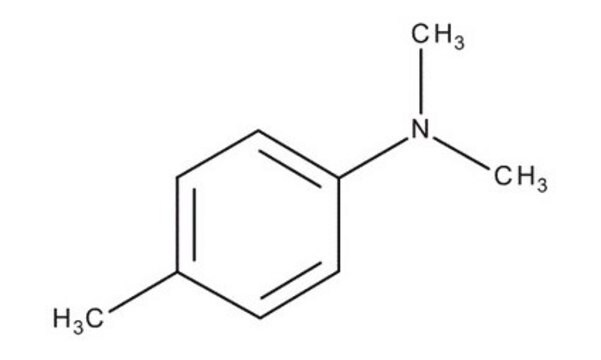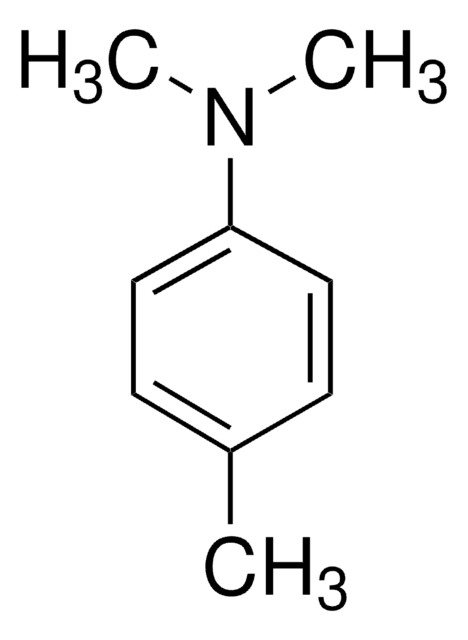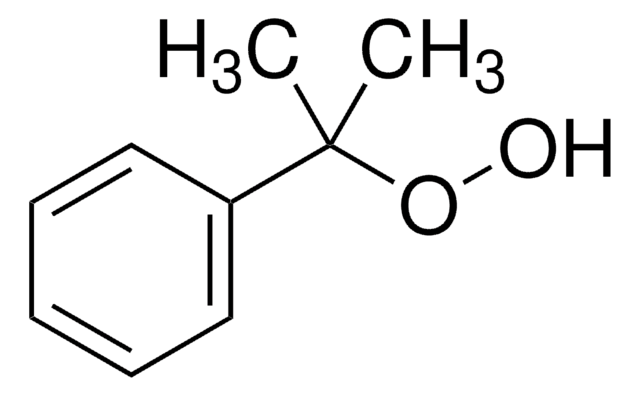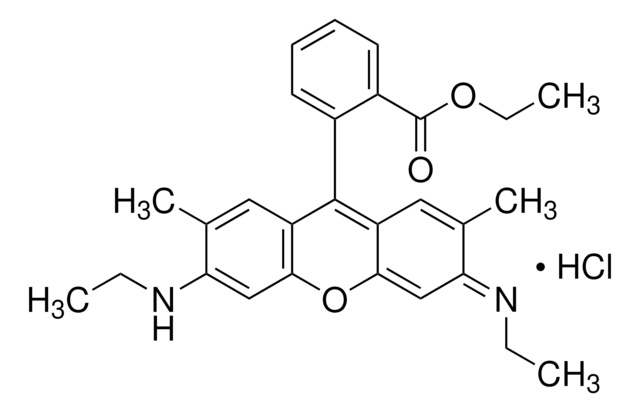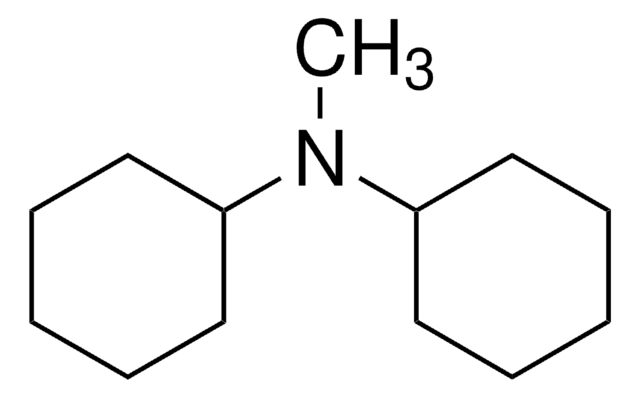41690
4,N,N-Trimethylaniline
catalyst grade (for peroxide polymerization), ≥98.5% (GC)
Sinónimos:
4-Dimethylaminotoluene, N,N-Dimethyl-p-toluidine
About This Item
Productos recomendados
grade
catalyst grade (for peroxide polymerization)
Quality Level
vapor density
>1 (vs air)
assay
≥98.5% (GC)
form
liquid
expl. lim.
7 %
refractive index
n20/D 1.546 (lit.)
n20/D 1.547
bp
211 °C (lit.)
90-92 °C/10 mmHg (lit.)
density
0.936 g/mL at 20 °C
0.937 g/mL at 25 °C (lit.)
functional group
amine
SMILES string
CN(C)c1ccc(C)cc1
InChI
1S/C9H13N/c1-8-4-6-9(7-5-8)10(2)3/h4-7H,1-3H3
InChI key
GYVGXEWAOAAJEU-UHFFFAOYSA-N
¿Está buscando productos similares? Visita Guía de comparación de productos
Categorías relacionadas
General description
Application
- Charge-transfer complexes for redox polymerization: 4,N,N-Trimethylaniline used for on-demand amine/peroxide redox polymerization. This research offers a new perspective on the use of 4,N,N-Trimethylaniline in creating controlled polymer structures, which is crucial for various industrial and pharmaceutical applications (Garra et al., 2018).
Caution
signalword
Danger
Hazard Classifications
Acute Tox. 2 Inhalation - Acute Tox. 3 Dermal - Acute Tox. 3 Oral - Aquatic Chronic 3 - Carc. 1B - Repr. 2 - Skin Sens. 1 - STOT RE 2 Oral
target_organs
Reproductive organs
Storage Class
6.1A - Combustible acute toxic Cat. 1 and 2 / very toxic hazardous materials
wgk_germany
WGK 3
flash_point_f
168.8 °F - closed cup
flash_point_c
76 °C - closed cup
ppe
Eyeshields, Faceshields, Gloves, type ABEK (EN14387) respirator filter
Elija entre una de las versiones más recientes:
¿Ya tiene este producto?
Encuentre la documentación para los productos que ha comprado recientemente en la Biblioteca de documentos.
Nuestro equipo de científicos tiene experiencia en todas las áreas de investigación: Ciencias de la vida, Ciencia de los materiales, Síntesis química, Cromatografía, Analítica y muchas otras.
Póngase en contacto con el Servicio técnico